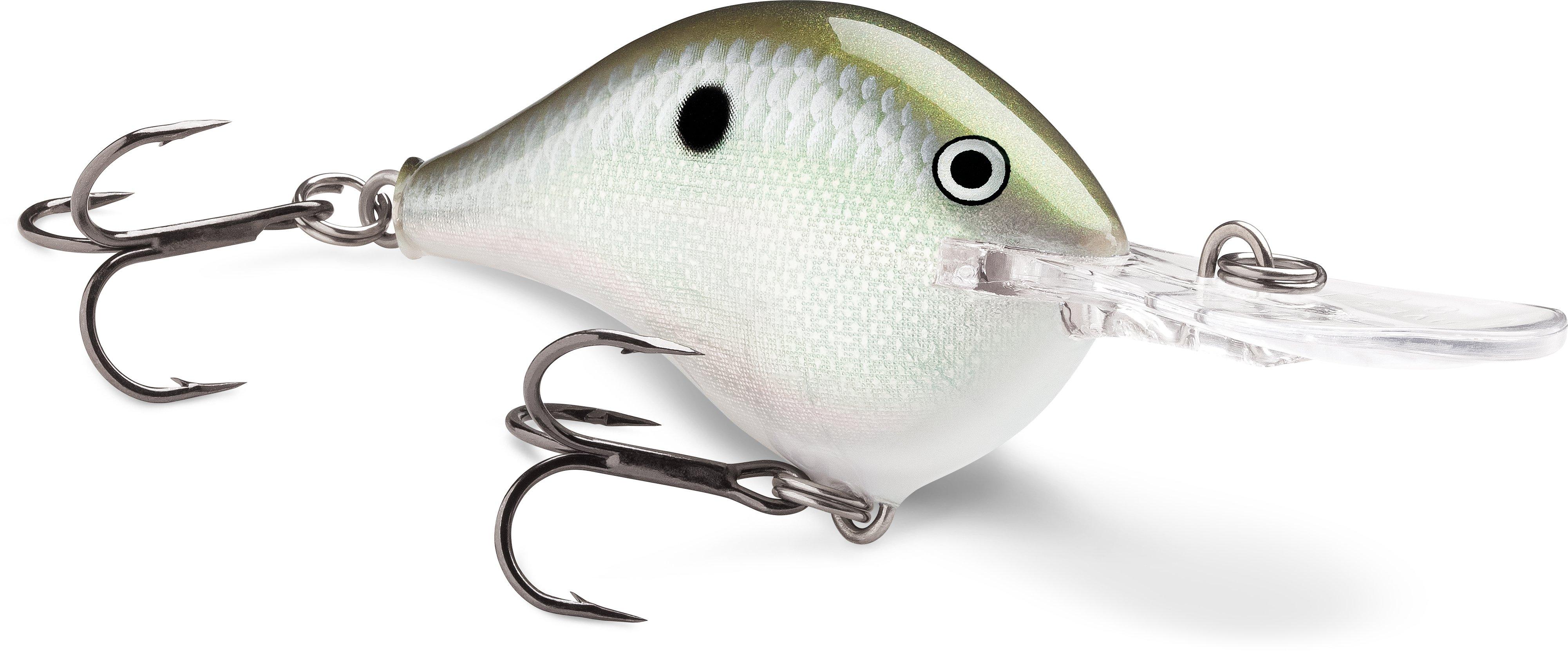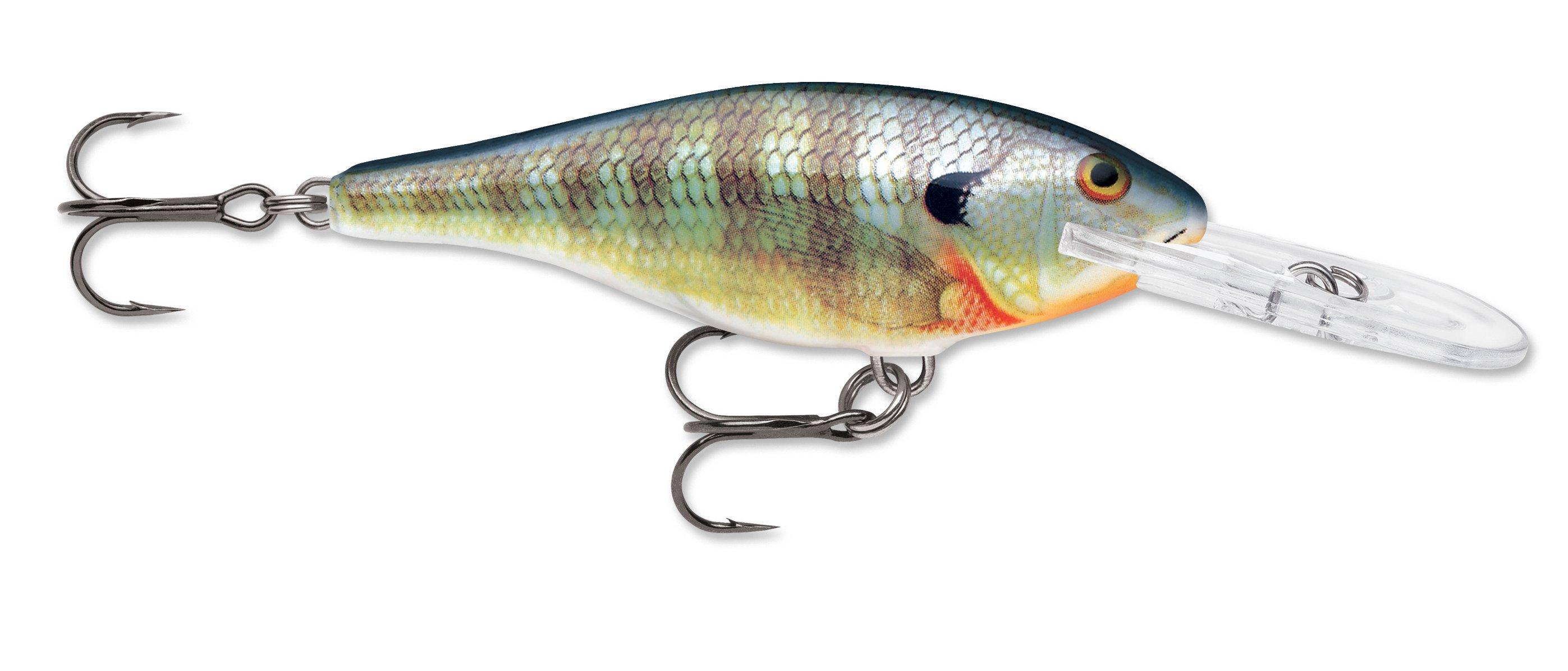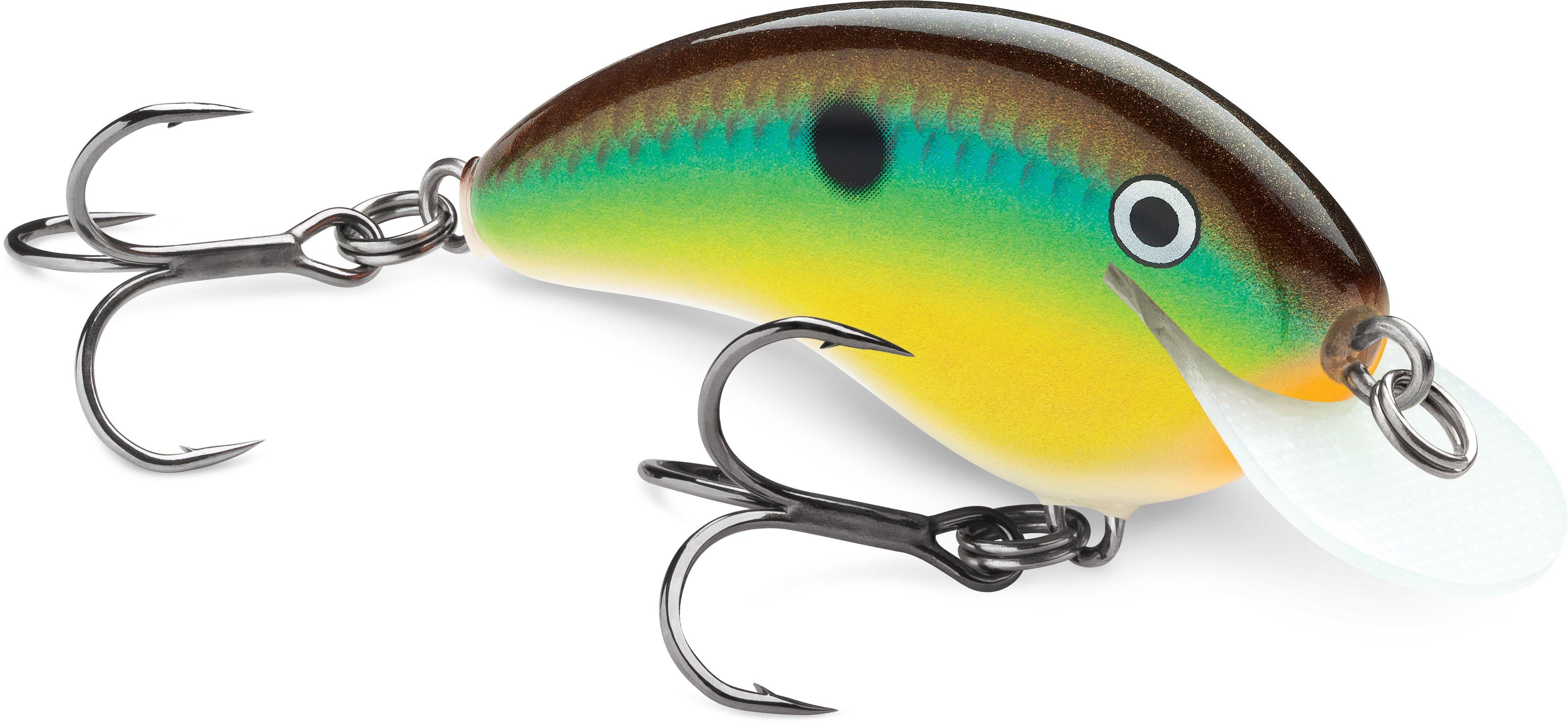Crankbaits are a spring bass staple, and knowing which one to fish is as easy as reading the water conditions

Square-billed crankbaits reign supreme in warm, off-colored water. Image by Millennium Promotions
Crankbaits are among the all-time greats of bass fishing lures — or bass catching lures, I should say. Cranks fit in with the other primary bait categories including spinnerbaits, soft plastics, jigs, and topwaters. They’re proven performers despite the decade, fad, or body of water.
In the early days, crankbaits were carved from wood, but that quickly changed to plastic bodies being manufactured in mass. This is when crankbaits really took over the market. Legendary names like the Big O, Deep Little N, and Wee-R popped up in what was jokingly termed the “Alphabet Race.” Most crankbaits started with a short, square bill, then grew to longer lips that produced deeper dives. Overall, though, crankbait choice was simple at the time. Just pick one that ran at the right depth.
It's not as easy today. Thousands of crankbaits clutter the aisles of tackle stores and pages of websites. There are flat bodies, fat bodies, square-bills, and coffins. XDs, HDs and DD22s. All work under certain conditions at different times of year.

Deep-dving crankbaits are the go-to choice for early spring, before bass move shallow. Image by Rapala
Today, we’ll dive in to how to choose the proper crankbait for spring. After all, it’s one of the best seasons for bass fishing, and we’re all anxious to get out there and crank in a few hawgs, right?
Let’s dive in. No pun intended.
There are three key variables in choosing a productive crankbait for spring fishing. By considering each, you can quickly choose the crankbait that gives you the best odds. From there, it’s just a matter of selecting a bait determined to fit your specific needs. Follow along.

Subtle, thin crankbaits are best suited for cold, clear water and limited cover. Image by Rapala
1. KNOW THE WATER TEMPERATURE
This is the best way to determine exactly where your local body of water is in relation to spring and the spawning season of the bass.
Ultra-cold water (temperatures 38 to 43 degrees) will find most bass still in winter patterns, inhabiting deep water. “Deep” is relative, and could mean 25 feet in some lakes, or as little as 10 in river systems. Regardless, bass will be sluggish and inhabiting the same zones where they’ve spent most of the winter. Deep-diving baits with a subtle wobble will be best. A thin overall body profile and bill will key you in to a crank’s soft wiggle, making it a cold-water killer. Lipless baits with their ultra-tight wiggle also trigger a lot of bites this time of year.
Cold water (44 to 52 degrees) brings bass out of their winter haunts, and beginning to scour the shallows. Scaling back on lip size is key to choosing the right lure, but it’s important to stay with a bait that isn’t overly energetic. A crank with a light roll will out-produce one that shakes the guides loose on your rod. Master crankbait technicians across the Mid-south carve hand-made, flat-sided baits that excel. Numerous similar lures are now mass produced with thin bodies and angled bills. You’ll want a lure that swims more than wiggles, and covers the 4- to 8-foot depth zone well.
Warming water (53 to 60 degrees) allows anglers to turn up the heat, too. Now is the time to pick a wide-wobbling square-billed model and get moving. Bass are fully committed to the shallows and are spending time hunting prey and picking out a spot to bed. Both draw them to objects that you’ll need to bang your crankbait into. Snag-resistant lures are key, and wider wobbles help. Lipless baits can again join in the action, triggering aggressive fish.

Flat-sided crankbaits come into their own around brushy cover, and when waters begin to warm in spring. Image by Rapala
2. CONSIDER THE COVER
Here, it’s important to choose an efficient bait that gets noticed, but not hung up.
Rocks and rip-rap are a springtime staple. Whether pea-gravel points or material around a dam, rocks draw heat, which draws springtime bass. A medium-billed bait will outperform a short, stubby square-bill most times. Floaters should be chosen over suspenders, as more buoyant choices rise up away from the rocks on a pause and get noticed. Crawfish colors are the go-to here, especially in spring.
Brush and stumps are square-bill meccas. The primary draw of this bait is its snag-free design, a result of a hard wobble and fat, buoyant profile. Square-bills actually wiggle themselves out of trouble with a body that protects the hooks. Here, look for the short, squat lures. The use of heavy line — say, 17- or 20-pound test — will increase the snag-free traits of these lures even more. Crash them through the cover to trigger big bass. If a more subtle approach seems necessary, a flat-sided bait will fill the same niche.
Submerged vegetation isn’t usually thought of as a crankbait destination, unless, of course, we’re talking about lipless lures. These baits are made for the task of springtime grass cranking, since their sinking characteristics allow deep-water penetration. By design, lipless cranks don’t bog down in grass, and that allows anglers to make contact, but keep moving. A quick rip of the rod is all that’s necessary to free from hydrilla and milfoil.
Little, if any cover allows an angler to choose any crankbait, really. However, the most natural swimming models will get the most bites. Subtlety is key, so stay away from the fat wobblers. Flat-sided lures are often top producers, provided they get to the depth where the bass are hanging out. Suspending models stay near the bottom on a pause, and will usually catch the most fish.

Round-bodied baits produce more vibration than thinner models, helping bass find the lures in dirty water. Image by Rapala
3. CONSIDER THE CLARITY
Clarity affects your color choice in lures, as well as which to choose.
Clear water again leans us toward natural looking lures. Subtle wobbles. Slim profiles. Drab colors. Here is where you want a lure that doesn’t cause a scene — especially if the water is cold. When looking at a lure form above, subtle divers will be slim and streamlined. They also respond well to light line, a necessary approach when cranking open water. At times, the smallest, most subtle baits may require a spinning rod to cast. Suspending models work best.
Stained water requires anglers to bring attention to their lures through brighter colors or more pronounced actions. Most cranks will work in a bit of stain. Rattles help, too. Chartreuse color patterns are go-to, especially when blended with a realistic pattern. If shad are the preferred forage in your waters, flat-sided baits can be deadly in water with a little color, as they combine the swim of a subtle wobbler with a shot of gaudy flash. Lipless baits work in grass.
Muddy water again presents a need for a square-billed crankbait. In visually-challenged situations, square-bills draw fish to them, thanks to increased water displacement. Bass can find a square-bill multiple ways. Stick to bright, flashy colors — oranges, reds — and patterns with lots of contrast, like chartreuse and black. Don’t spend too much time worrying about rattles. Square-billed cranks make a ton of noise simply from their hooks constantly banging into the lure body. Keep the bait moving with a medium, bumping retrieve. If fishing grass, again go lipless, but allow the lure to touch down, and then rip it out aggressively.

Lipless crankbaits are surprisingly good in cold water, and the obvious choice around vegetation. Image by Millennium Promotions
Crankbait Quiz
Once you consider the three variables above, it’s easy to get directed to the correct crankbait for your situation. Let’s try the guidelines:
Brushy cover in stained, cold water: Flat-sided lure, chartreuse pattern.
Clear, warming water with little cover: Lipped bait, subtle wobble and colors.
Granted, there are exceptions to every rule, but our guide will get you pointed in the right direction. Crankbaits are extremely versatile lures, and should definitely be a first choice in the spring, regardless of conditions. With the vast array of lures on today’s market, you’re sure to score with a crank this time of year. Choosing the right one to throw doesn’t have to be intimidating.
(Don’t Miss:* HOW TO CRAPPIE FISH WITHOUT A DEPTH FINDER)*










